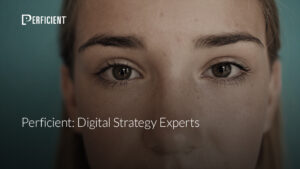Before I’m labeled as a “visual design hater,” you should know that I was a visual designer for five years and a creative director for 10 years. I left the creative side of the house for two reasons. I felt a lot of people were better designers than I was and I became obsessed with the “why” question. Finding out why something is successful became my passion and calling.
Visual design and UX are different, and both are necessary
Visual design and user experience (UX) are like the washing machine and the oven in your house. You need them both. And they are different. We know that we don’t clean in our oven or cook in our washing machine. However, there seems to be a trend for some to attribute UX success to a pleasing visual design. Visual design and user experience have very specific and different goals and tasks.
When I think of visual design goals and tasks, what comes to mind is:
- Aesthetically drawing attention to what’s important
- Consistency in visual treatments
- Supporting an emotional response
- Awareness of popular visual trends
The Future is Digital
Becoming digital is the surest way for you to understand your customers' needs and meet their expectations. Learn how Perficient can help anticipate what's ahead for you and your customer with a digital strategy centered around empathy, alignment, and agility.
When I think of UX goals and tasks, I think of ways to directly involve the end user such as:
- Conducting research directly with users
- Developing testing that is focused on understanding user intent
- Validating what is user-friendly directly with users
I think we can see this same concept played out in the culinary world. “We taste first with our eyes” is a mantra of many great chefs. How food looks is not synonymous with how it tastes. In a high-end restaurant, the chef who prepares the lobster is not the same chef who plates the lobster. Visual design and UX have a similar relationship. Just because a product is visually pleasing doesn’t automatically mean it is satisfying to use. Have you ever downloaded an app with that seemed to be what you were looking for only to find it was awkward to use?
With visual design and UX, the goal is to balance the right aspects of each to deliver a product that develops enduring brand loyalty. The challenging thing for us on the UX side is that what we deliver is more behind the scenes than what a visual designer delivers.
So, how can we develop more internal visibility for UX?
A lot of people are familiar with Dr. Sanjay Gupta, a famous neurosurgeon, but whoever hears about the anesthesiologists he relies on? How do we in the UX field build awareness for the value of the role we play?
Identifying an executive champion might be one possibility. An executive champion could be a director, vice president, C-level individual, or another type of leader who is willing to support and promote the value of UX. If one doesn’t exist, we will do well to educate and help convert executives into UX advocates. It’s our responsibility to promote a clear understanding of visual design and UX, and an executive champion is one way.
Some other options to consider might be:
- Hosting lunch and learns to educate other teams about what we do
- Announcing certifications we earn and awards we win
- Publishing thought leadership
- Establishing partnerships with visual design teams
Here’s a personal story: I knew the visual designers on a particular project several years ago were very frustrated with clients making what seemed to be endless changes to high-fidelity comps. I pitched to the visual designers that the UX team could work with them to flesh out more of the internal structure with the stakeholders using low-fidelity wireframes. Our offer to partner with the visual design team turned out to be an easy sell and a huge success. In addition to that, our UX research helped to guide and support the design team’s recommendations to stakeholders with hard data. The result was that the visual design team started getting less push-back from stakeholders. In the end, the visual design team encouraged more UX involvement in their projects.
It’s time for UX teams to be creative in making sure that things not only look great, but also work great. Be proactive in finding ways to partner with other teams to support them. Be an advocate for promoting both washing machines and ovens, visual design and UX. Each has an important role and getting those roles confused can lead to some unplanned results.
